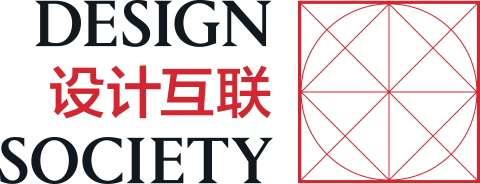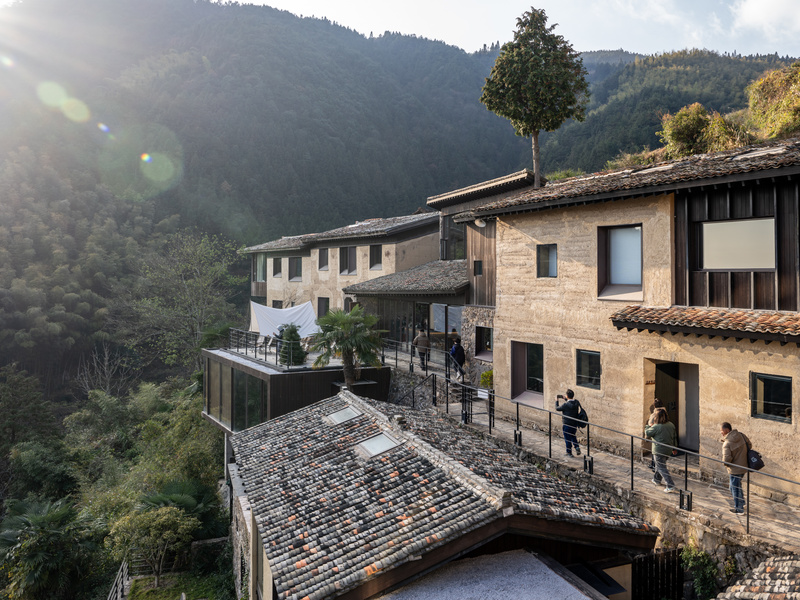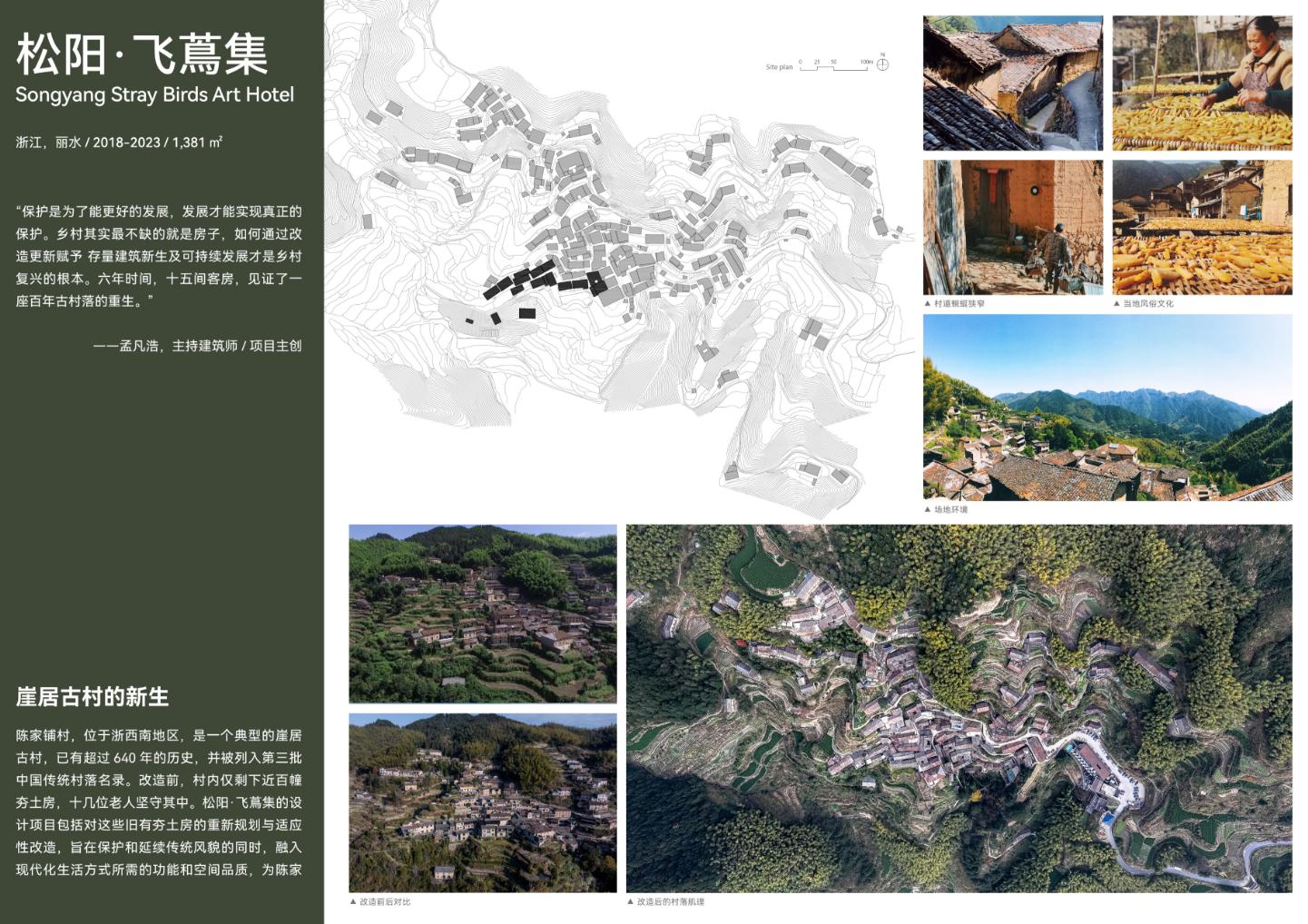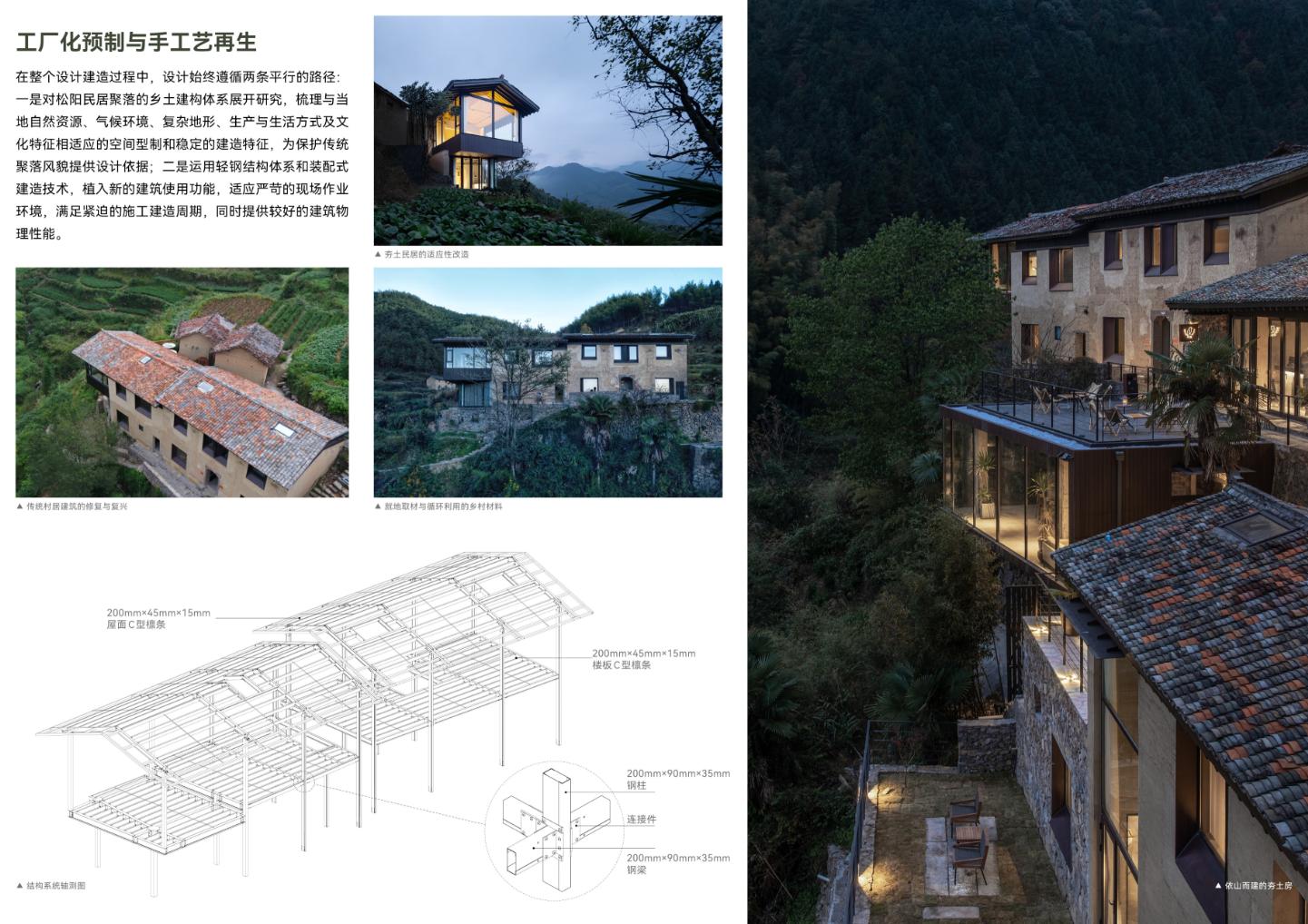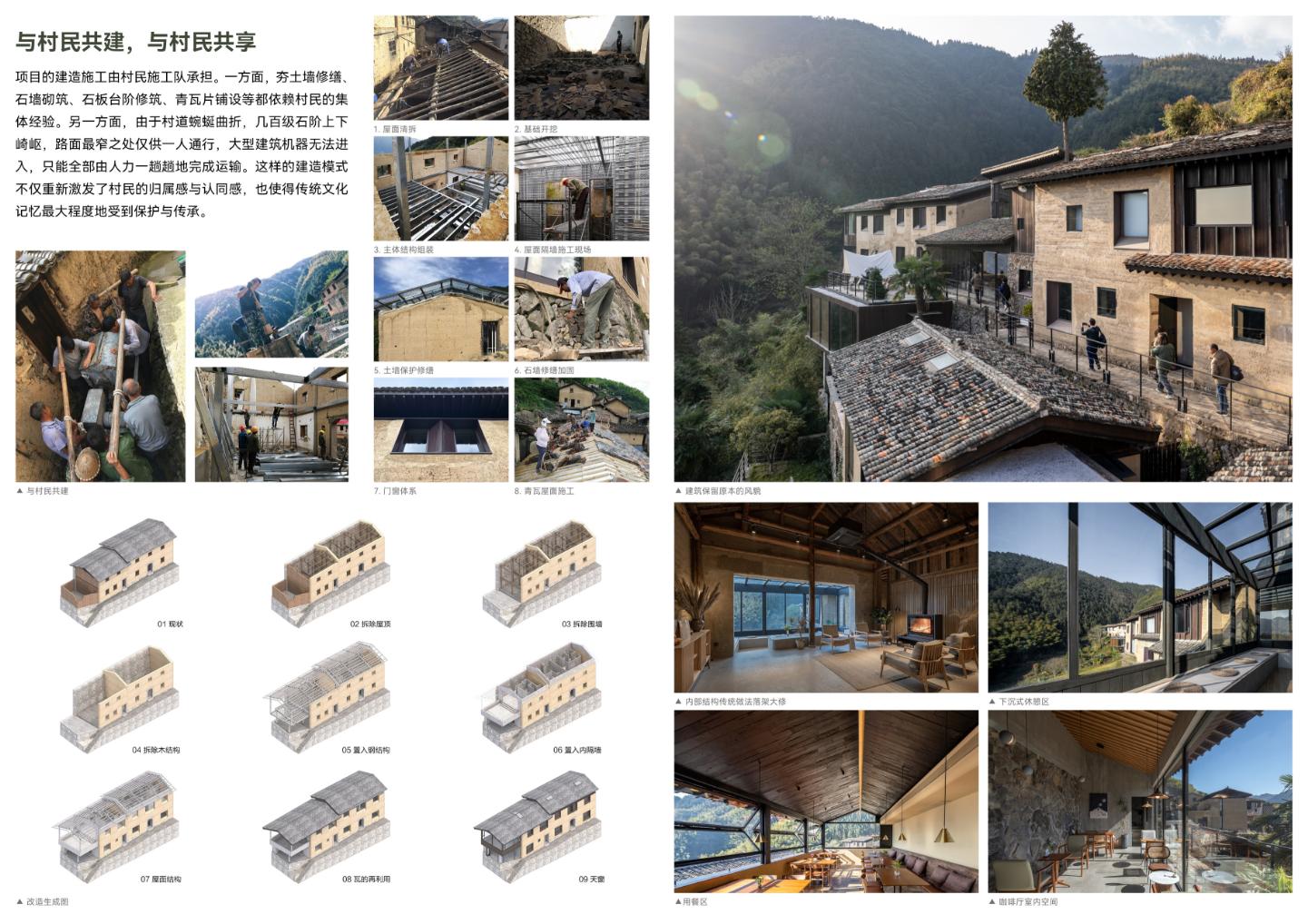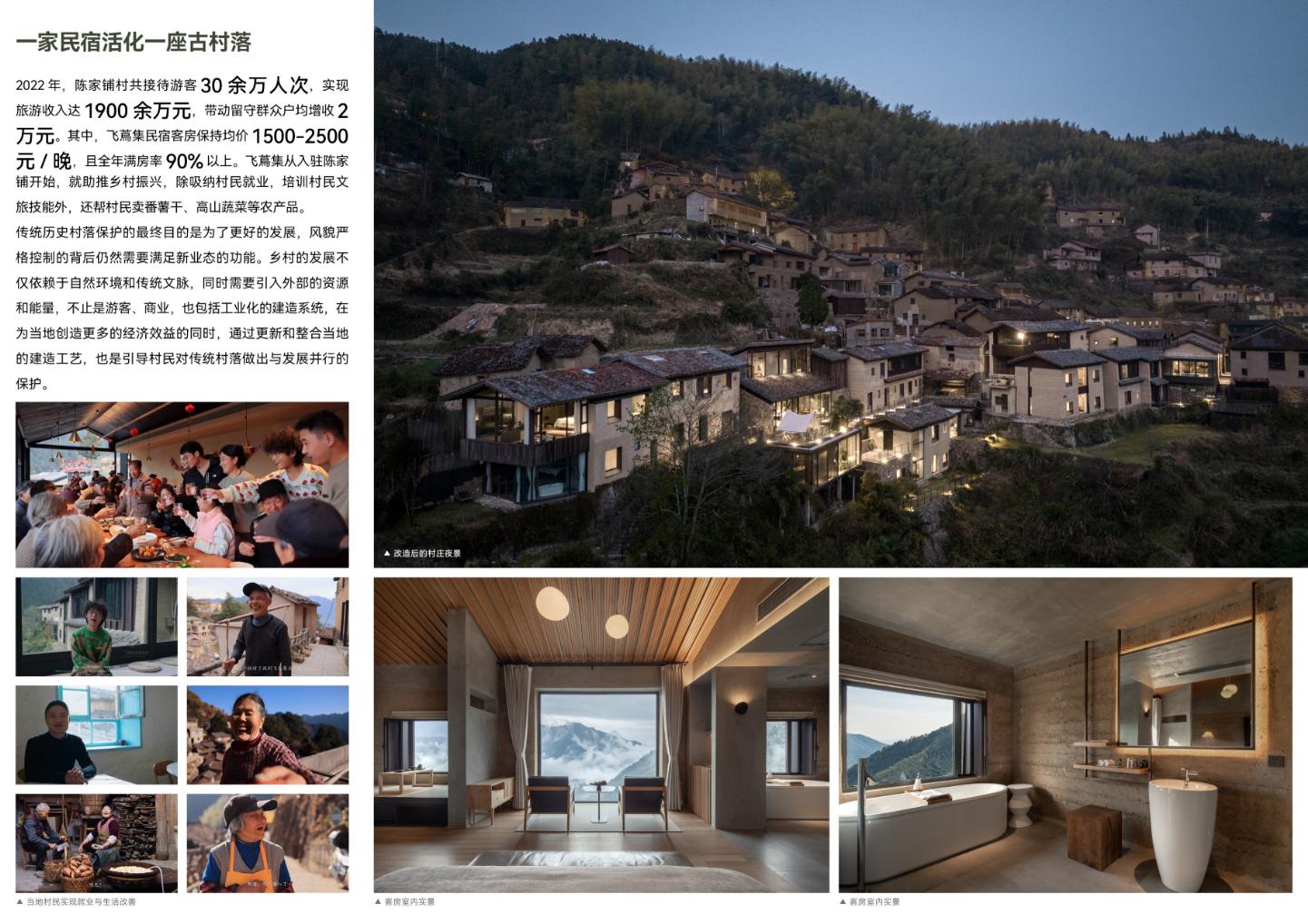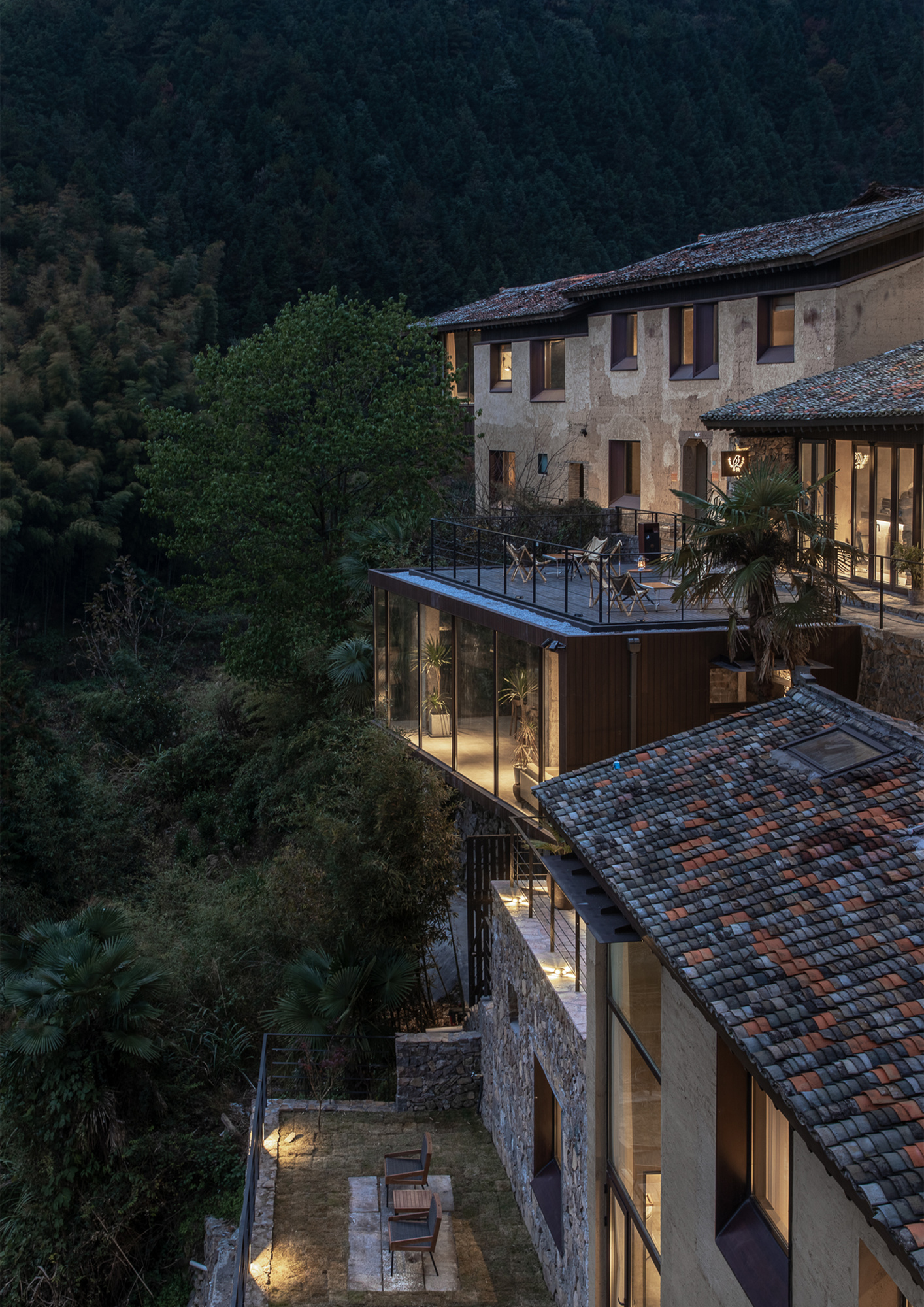
New Life Photography of Ya Jugu Village: Tang Xu Guo
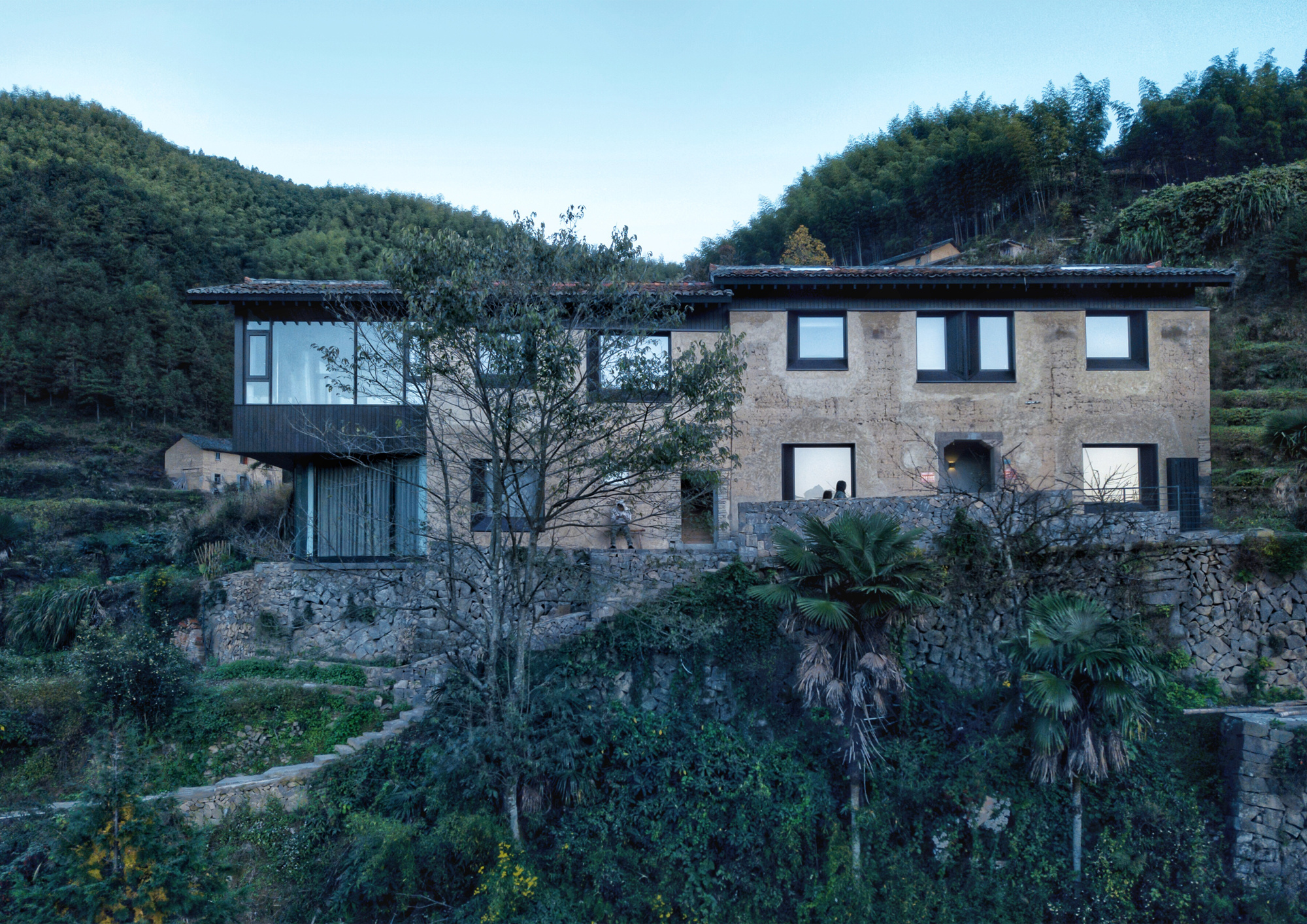
Adaptive Transformation of Rammed Earth House Photography: Existence Architecture-Architecture Photography
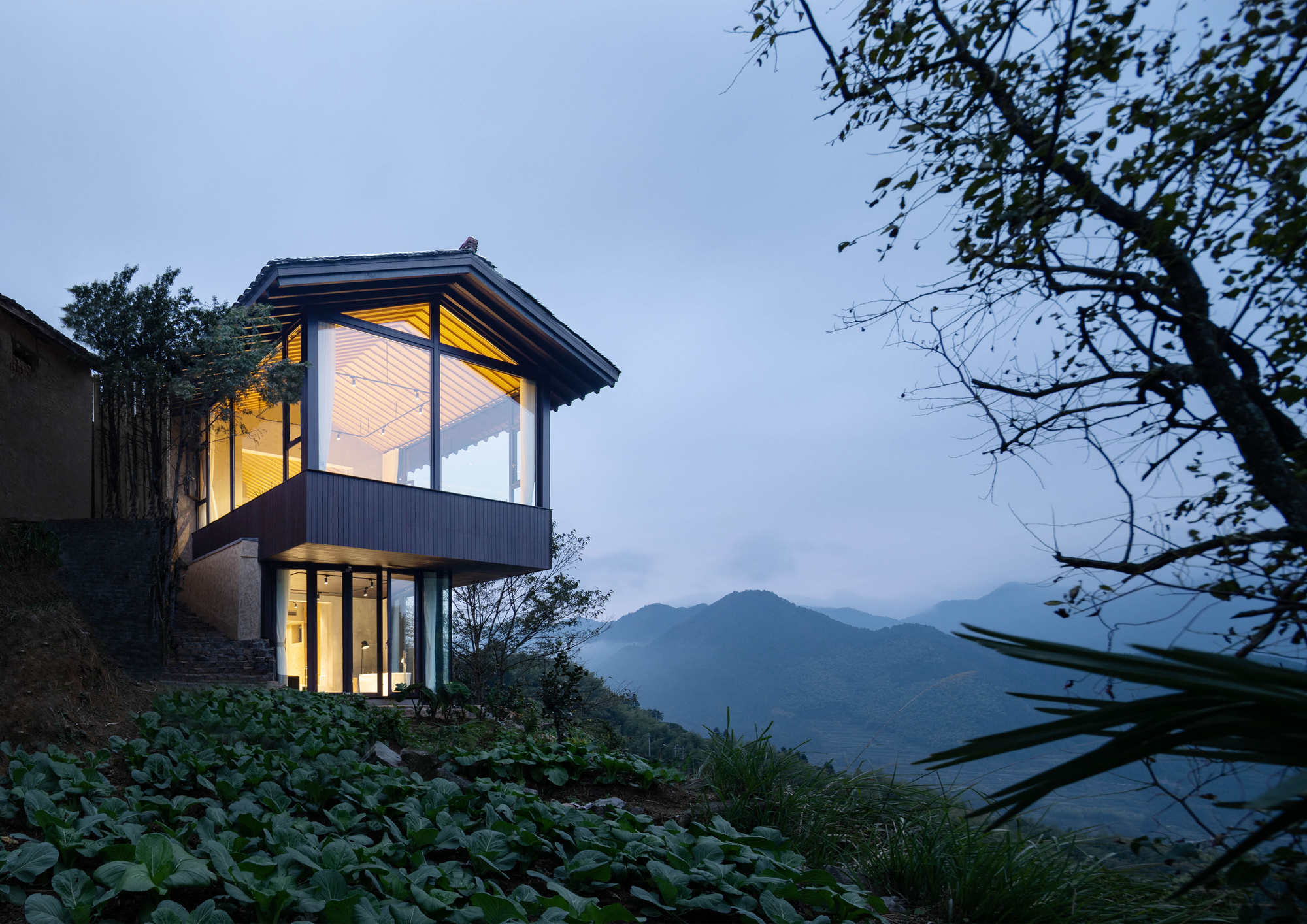
New and Old Photography: Yang Guangkun
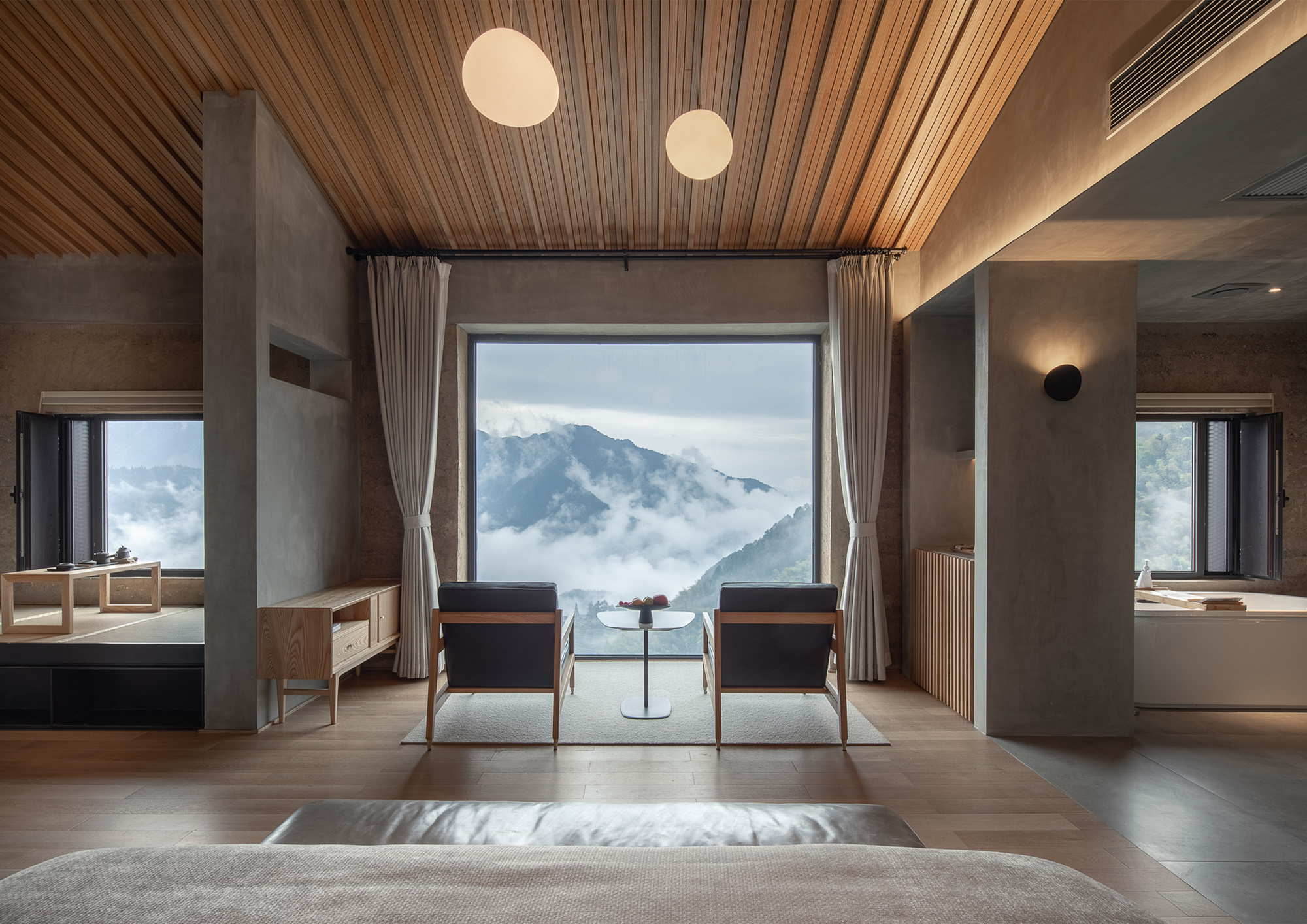
Fully Responding to Natural Landscape Photography: Tang Xu Guo
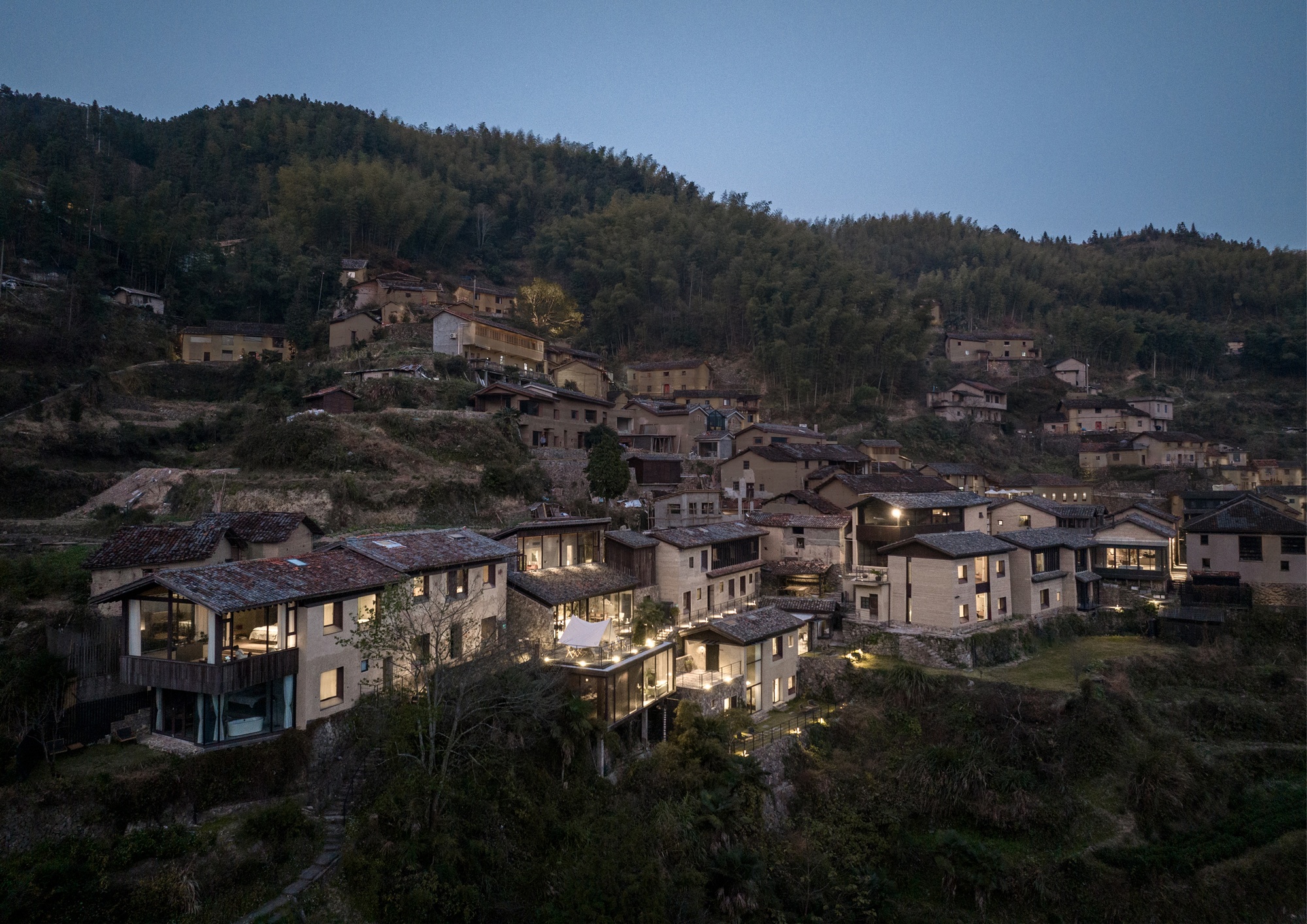
New Life Photography of Ya Jugu Village: Chen Xi and Jin Zixiong
Songyang-Fei Guji
Songyang, Fei Guji Villagers Interview_1
Songyang Fei Guji Villagers Interview_2
The century-old village of Chenjiapu overhangs on the cliffs, showing a typical cliff settlement in southwestern Zhejiang. Through the systematic combing of the local local construction system and the overall understanding of the natural environment and topography, adaptive transformation is carried out under the conditions of respecting the village texture and style and the limitation of homestead. Most of the buildings were repaired and updated with local materials, while some of the collapsed buildings were rebuilt within the original outline. The construction method of combining traditional manual repair and industrial prefabrication assembly overcomes the severe construction conditions. While protecting and continuing the traditional style, it also implants the function and space quality that meets the modern lifestyle.
Chenjiapu Village, located in Songyang, Zhejiang, is a typical Ya Ju ancient village with a history of more than 640 years and has been included in the list of traditional Chinese villages. Before the renovation, there were only nearly a hundred rammed earth houses left in the village, and more than a dozen elderly people stuck to them. The Songyang Feizi project aims to protect the traditional style and features while introducing modern living functions to bring new development opportunities to the village. The project includes 15 rooms, a cliff cafe, a restaurant and a viewing lobby.
The design always follows a two-line parallel path: first, to study the local construction system of Songyang residential settlement to provide a design basis for protecting the traditional settlement style; Second, the use of light steel structure system and assembly construction technology to adapt to the harsh on-site construction environment, while providing better building physical performance. Based on the overall understanding of the settlement terrain and the surrounding landscape environment, through local restoration, moderate reconstruction and the blending of the old and the new, while awakening the local memory, the new use function and spatial quality meet the needs of contemporary life, so that the new and the old are in harmony and different ecology. At the same time, it also provides a universal method for the adaptive transformation of rural houses in remote mountainous areas.
The construction of the Project shall be undertaken by the construction team of villagers. Due to the narrow roads in the mountain village, large construction equipment cannot enter, and all materials can only be transported by manpower. The repair of rammed earth walls, the construction of stone walls and slate steps, and the laying of green tiles all rely on the collective experience of the villagers. This construction mode not only re-inspires the villagers' sense of belonging and identity, but also makes the traditional cultural memory protected and inherited to the greatest extent.
From the former "three no villages"-no one, no money, no resources, to today's popular destinations for cultural tourism-residential accommodation, bookstores, artist studios, cultural and creative bases and other formats, Chenjiapu Village will receive more than 300,000 tourists in 2022, achieving tourism income of more than 1900 million yuan, driving the average household income of the left-behind people to increase by 20000 yuan. In 2023, the number of tourists exceeded 600000, and tourism income exceeded 20 million yuan, attracting more than 160 villagers to return home. Among them, the average price of guest rooms in Feiji Homestay is 1500-2500 yuan/night, and the full room rate is over 90% throughout the year. Since its entry into Chenjiapu, Feigu has not only recruited villagers for employment and trained them in cultural and tourism skills, but also sold local specialties, such as alpine ecological chicken and dried sweet potatoes, through the e-commerce platform of agricultural products, creating a sustainable source of income for villagers. With the homestay industry as the core, Feiguji has formed a virtuous circle of "protection-development-sharing", which not only injects new economic vitality into the ancient village, but also stimulates the villagers' sense of identity with the local culture.
The ultimate goal of the protection of historical villages is to develop, and under the strict control of style and features, it is still necessary to meet the functions of new formats. Rural revitalization not only depends on the natural environment and traditional context, but also requires external resources and energy, such as tourists, commerce and modern construction systems. By updating and integrating the local construction technology, the villagers are guided to protect the traditional villages in parallel with the development, so as to reach a new cultural consciousness and consensus.
Co-founder and host architect of line Architects. Long-term commitment to urban construction and rural activation of the two-line parallel creative practice, and actively explore and think about the existing system and social development of the urban environment to improve the possibility of rural activation and revitalization. He has won the International Outstanding Architecture Award of the Royal Institute of British Architects, the Architectural Award of the Asian Association of Architects, the Young Architect Award of the Chinese Architectural Society, and the Silk Road Chinese Rural Literature and Art Award. In recent years, it has created a series of modern demonstration models for urban-rural integration and common prosperity for Zhejiang, Shandong, Guizhou and other provinces and cities, which have been widely reported by mainstream media such as People's Daily and Xinhua News Agency.
